Species pelargoniums are delicate flowers. They are half-hardy, so need to be brought indoors or sheltered in an unheated greenhouse over winter and then put out again when the weather improves. Often mistaken from geraniums, pelargoniums are long-flowering and will flower six months of the year.
There are about 17,000 pelargonium cultivars, all derived from just a few of the 280 species. The genus is diverse and includes annuals, perennials, succulents, shrubs and tubers that range in height from a few centimetres to several metres. The flowers are irregularly shaped, with two upper petals and three lower ones. The genus encompasses an enormous variety of leaf shape and textures and many species pelargoniums are grown for their scented leaves rather than for their flowers.
The difference between a species plant and a hybrid can be so huge that the two look unrelated. This gap is probably greatest between the gaudy flowers of hybrid pelargoniums (the popular ‘bedding geraniums’) and the subtle allure of the wild forms of the genus.
Pelargonium vs. Geranium
The disagreement about the naming of pelargoniums is an old one and even in the late 19th century gardening publications were complaining about gardeners who confused the two. Botanically, the genus Pelargonium includes all species plants and the modern hybrids that are commonly known as geraniums. The 18th-century botanist Carl Linnaeus grouped pelargoniums, erodiums and geraniums together and it was not until the beginning of the 19th century that botanists, witha few dissenters, agreed that they were different genera. It is peculiar that two centuries later no one would call an erodium a geranium but weare still referring to pelargoniumsas geraniums. At the time of the change erodiums, geraniums and pelargoniums were popularly known as heronsbills, cranesbills and storksbills, respectively, after the resemblance of their seedpods to the beaks of birds. The word pelargonium is derived from the Greek word pelargos, meaning a stork.
The best species pelargoniums
1
Pelargonium australe

A compact, low-growing species with dark-green, slightly hairy, leaves that have a reddish reverse and stems. The white flowers are often flecked with pink. Native to Australasia.
Height 30cm. Hardiness RHS H1C, USDA 10b-11.
2
P. articulatum
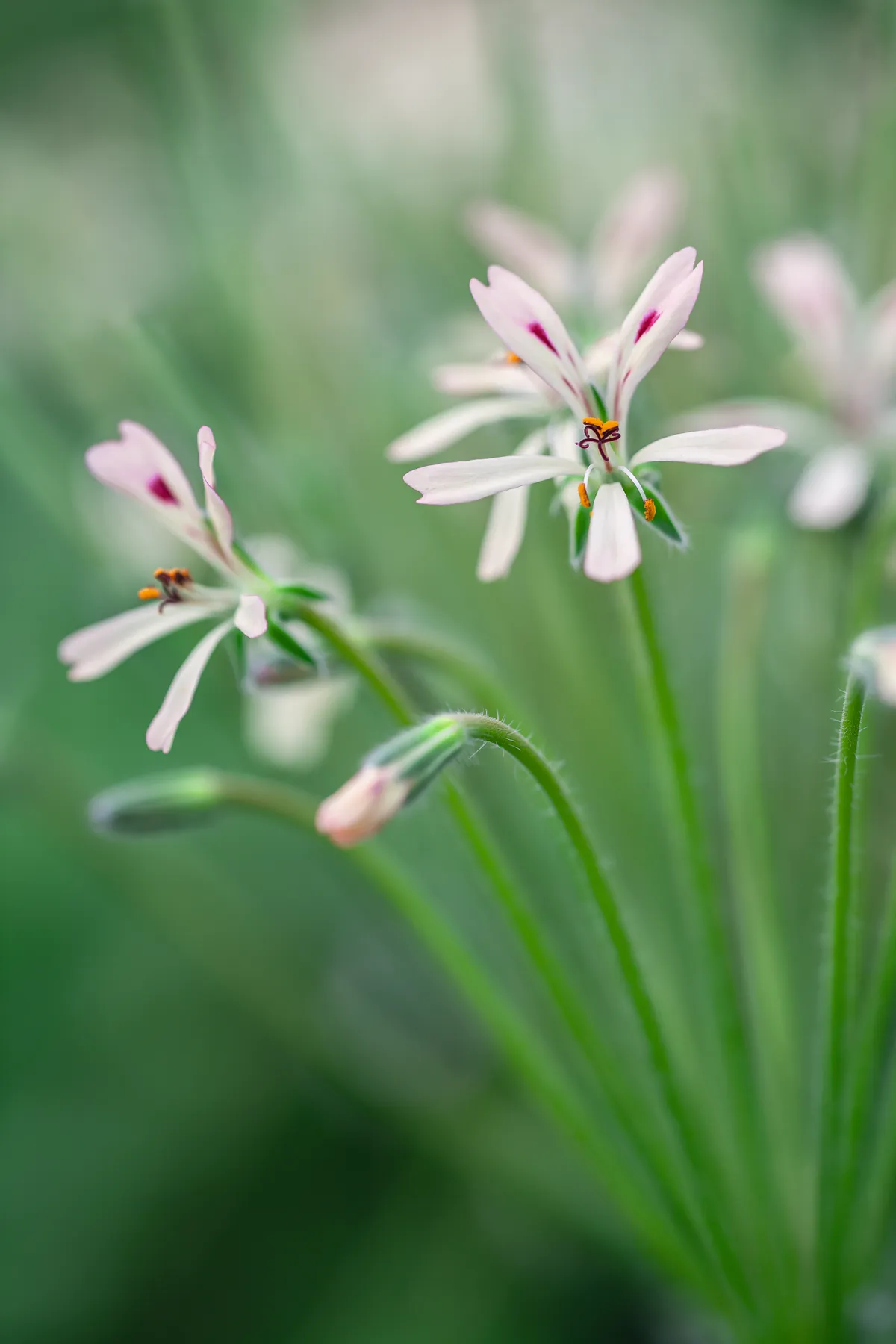
An improbable-looking plant with heart-shaped leaves at the end of 20cm-long stalks. It has been used in breeding programmes to produce the more upright zonal pelargoniums.
Height 40cm. Hardiness RHS H1C, USDA 10b-11.
3
P. ionidiflorum
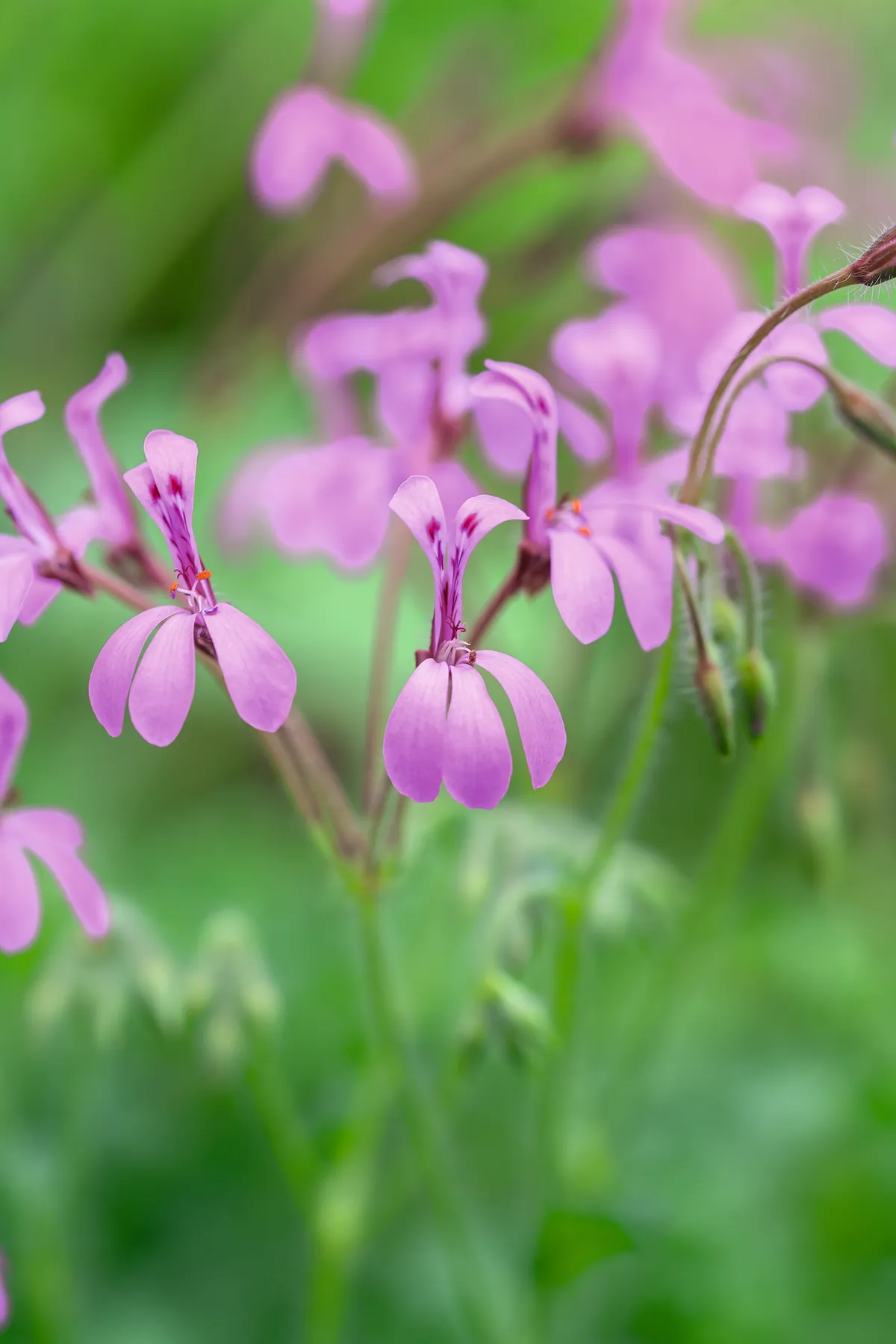
A neat and compact dome of small, serrated leaves (2cm long) that is smothered with sprays of pink flowers. Long-flowering – mine starts in May and carries on until the end of September.
Height 35cm. Hardiness RHS H1C, USDA 10b-11.
4
P. trifidum

A sprawling plant with spicy aromatic foliage whose stems can reach a metre long. The creamy-white flowers have narrow petals with maroon blotches on the upper pair and are up to 3cm wide.
Height 15cm. Hardiness RHS H1C, USDA 10b-11.
5
P. triste

An unpromising mound of feathery foliage followed by tall stems of tiny, cream flowers with purple blotches on the petals. Its real joy is the honey-and-clove perfume it produces at night.
Height 40cm. Hardiness RHS H1C, USDA 10b-11.
6
P. betulinum
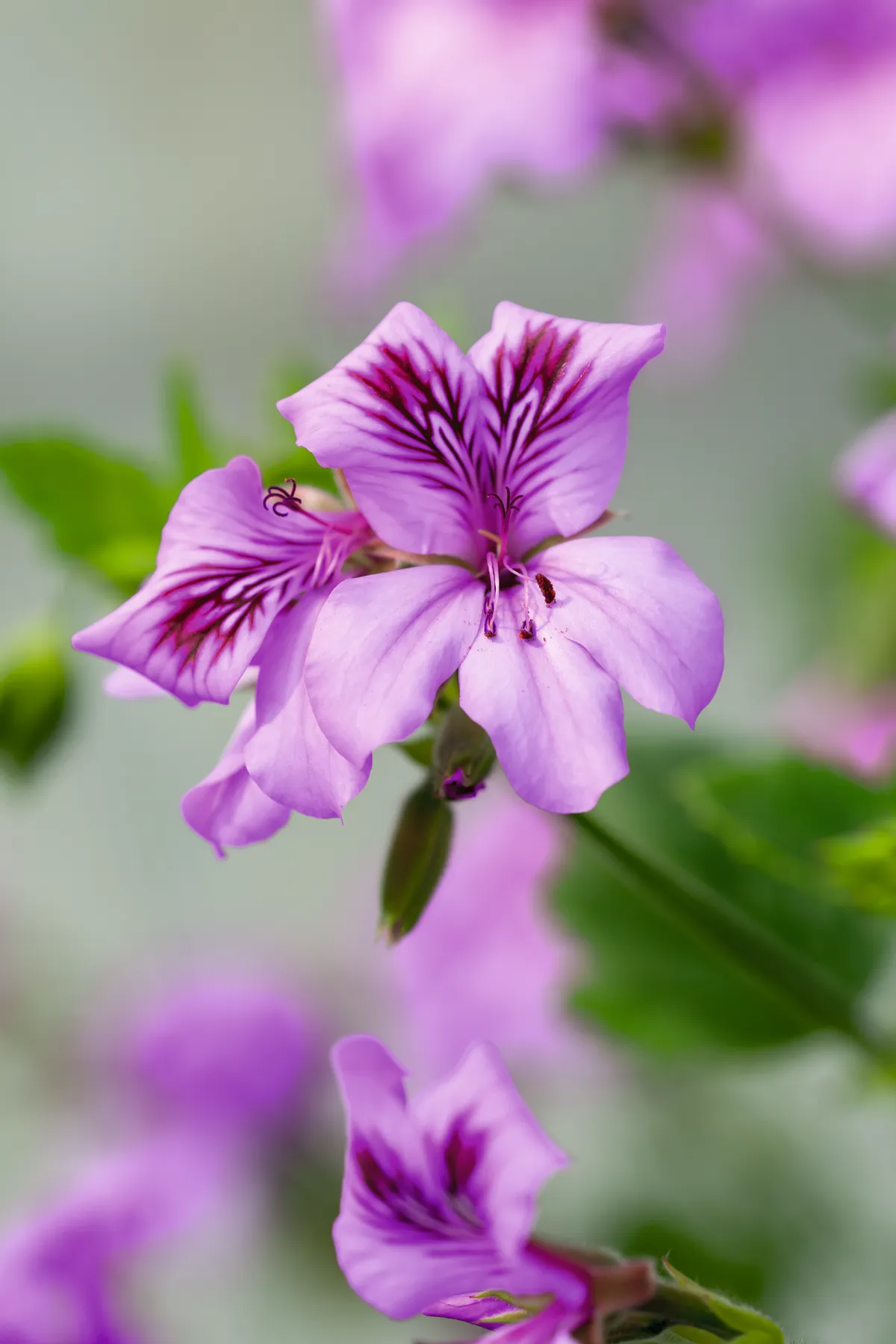
An upright plant with woody stems that has fresh-green, rounded foliage and large pink flowers. The flowers resemble those of modern regal hybrids and it may be an ancestor.
Height 30cm. Hardiness RHS H1C, USDA 10b-11.
7
P. myrrhifolium
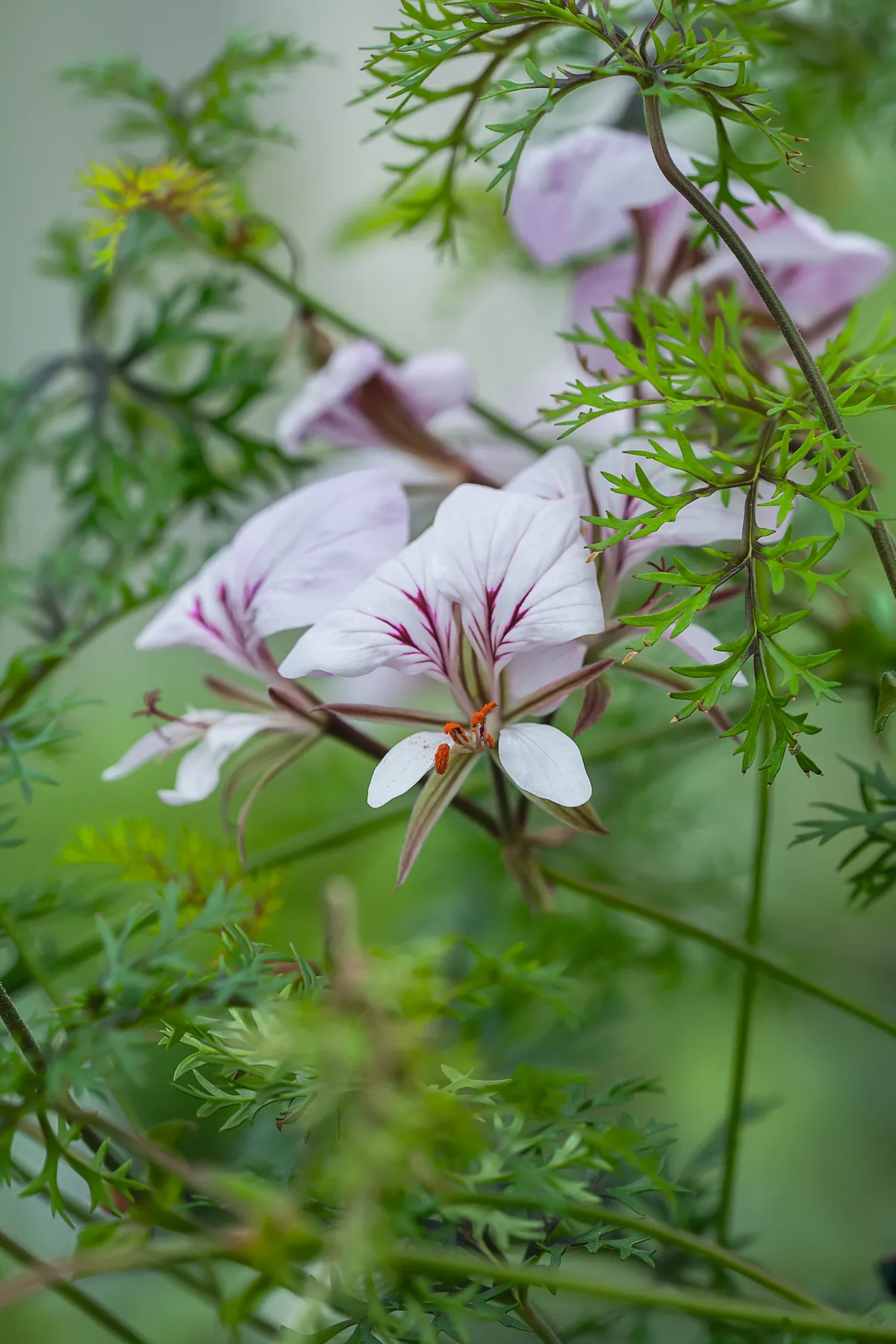
A prostrate, rather straggly, plant with finely cut, lacy foliage and pale-pink flowers with red veining on upper petals. The larger flowered form var. coriandrifolium, is more widely available.
Height 40cm. Hardiness RHS H1C, USDA 10b-11.
8
P. 'Splendide'
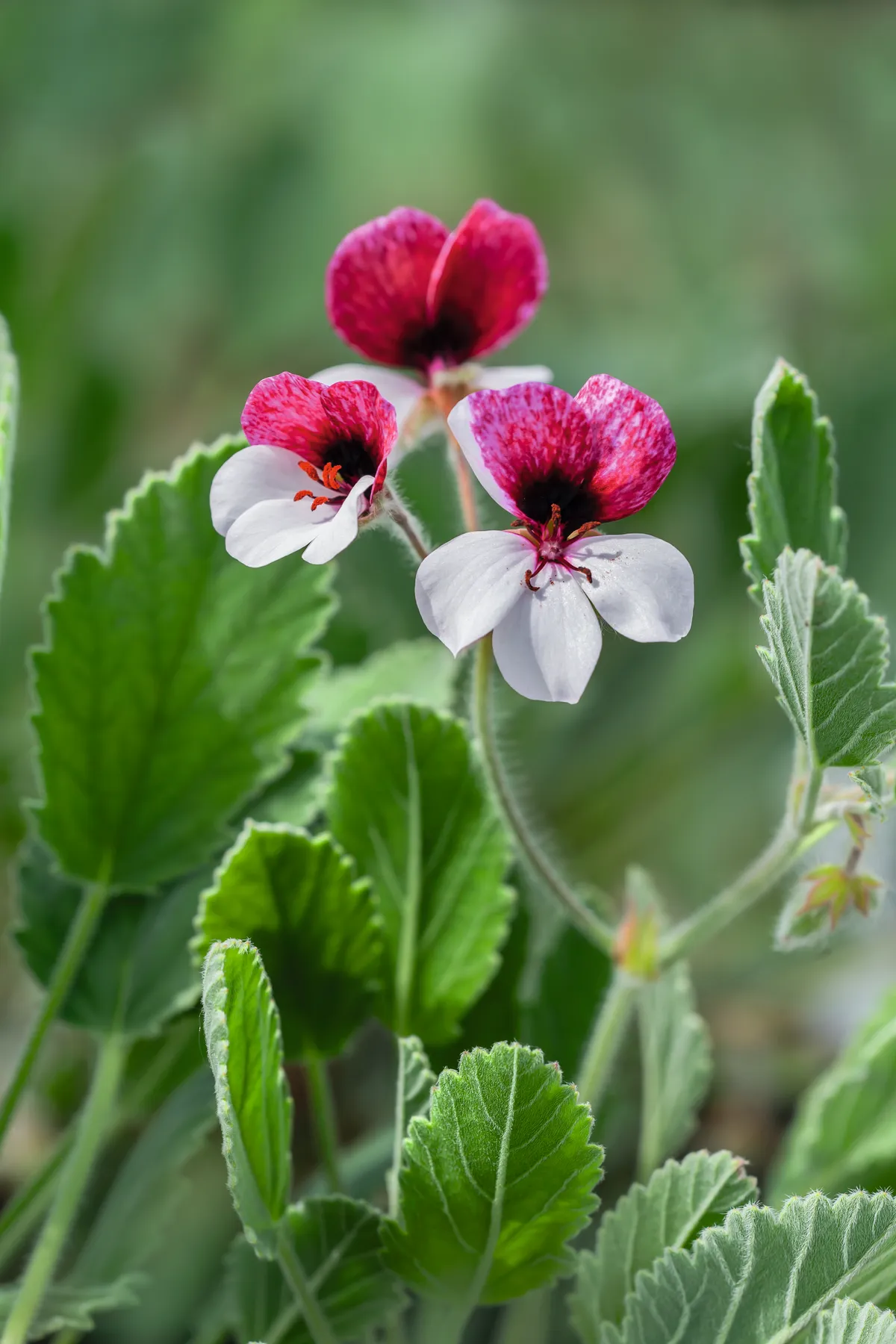
A neat, compact mound of silver-grey foliage that is smothered from late spring with carmine and pale-pink flowers. Thought to be a hybrid of P. tricolor and P. ovale.
Height 20cm. Hardiness RHS H1C, USDA 10b-11.
9
P. capitatum
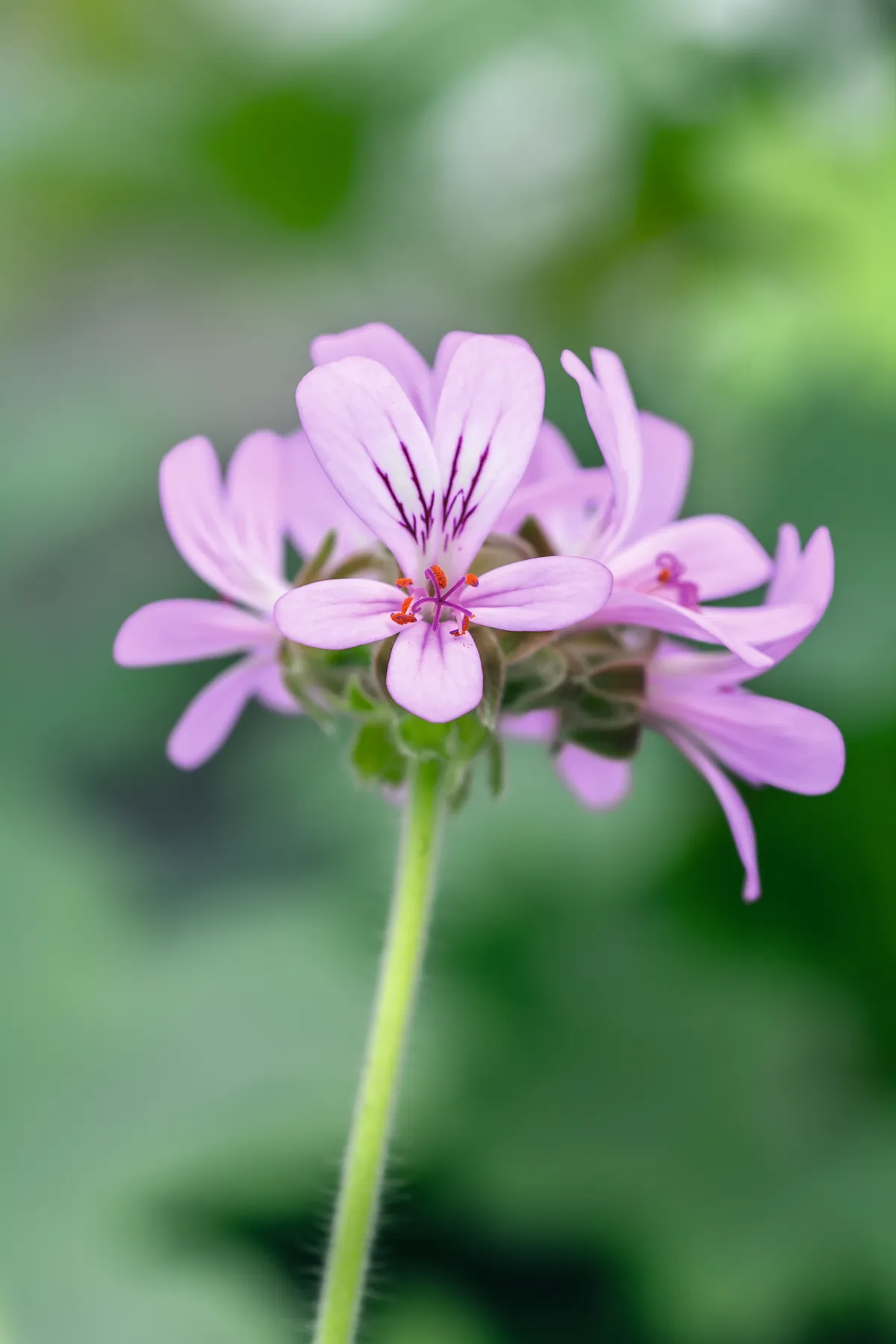
Soft, downy foliage that is strongly rose-scented, and tight clusters of mauve flowers. One of the first pelargoniums introduced into Europe. Now grown commercially for its scented oils.
Height 40cm. Hardiness RHS H1C, USDA 10b-11.
10
P. tomentosum
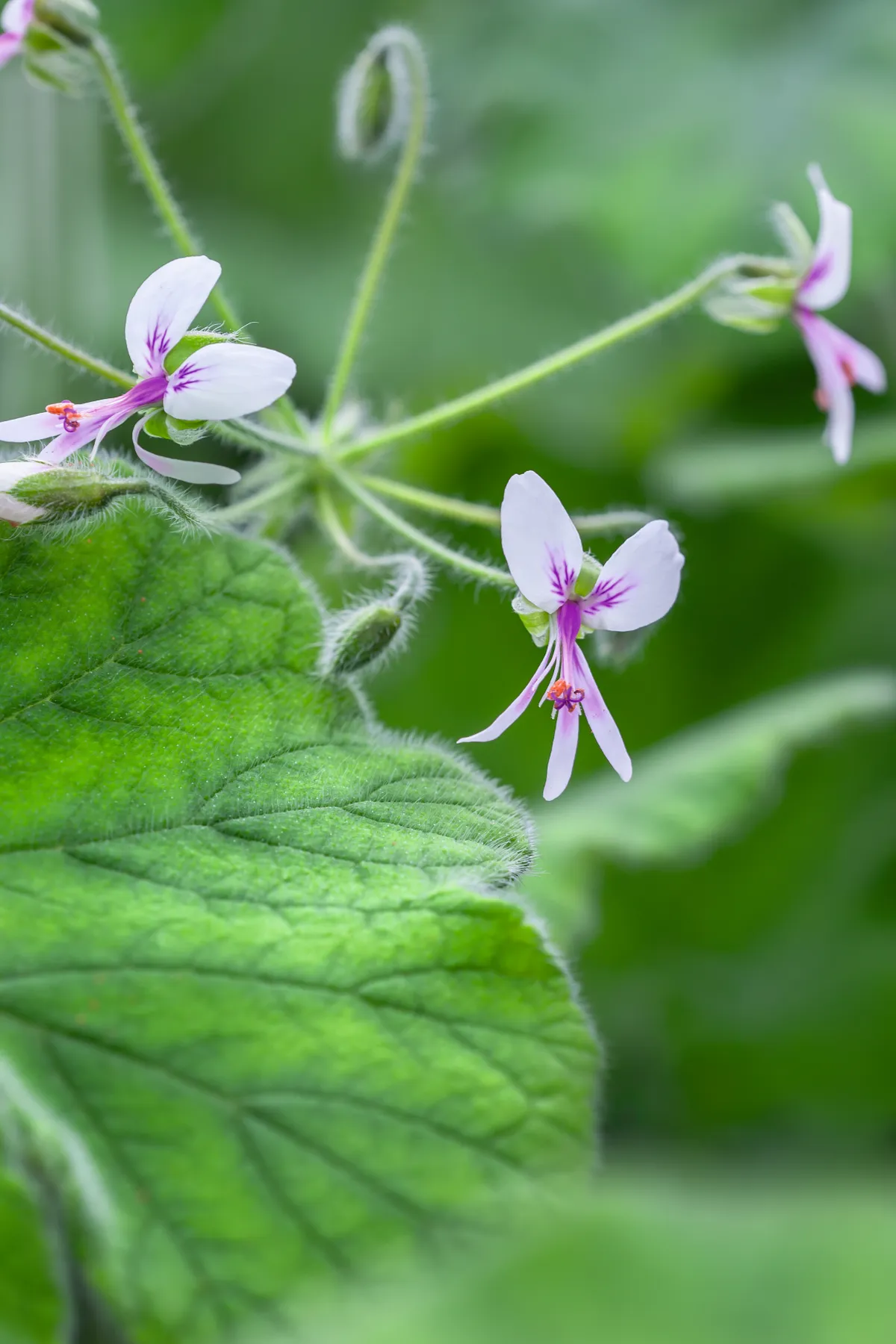
A species grown more for its spectacular foliage than for its sprays of tiny leaves. The leaves are large, smell of peppermint and have the texture of velvet, making them irresistible to touch.
Height 50cm. Hardiness AGM. RHS H1C, USDA 10b-11.
11
P. 'Lawrenceanum'

Arching sprays of deep-purple petals with a pale edge that makes the flowers gleam. A cross between P. ‘Ardens’ and P. lobatum that has a spicy scent at night.
Height 40cm. Hardiness RHS H1C, USDA 10b-11.
12
P. lanceolatum

The fleshy, glaucous leaves are, as the name suggests, lance-shaped and held upright. Flowers are white with a red mark on the upper petals. Not as floriferous as other species.
Height 45cm. Hardiness RHS H1C, USDA 10b-11.
13
P. caffrum
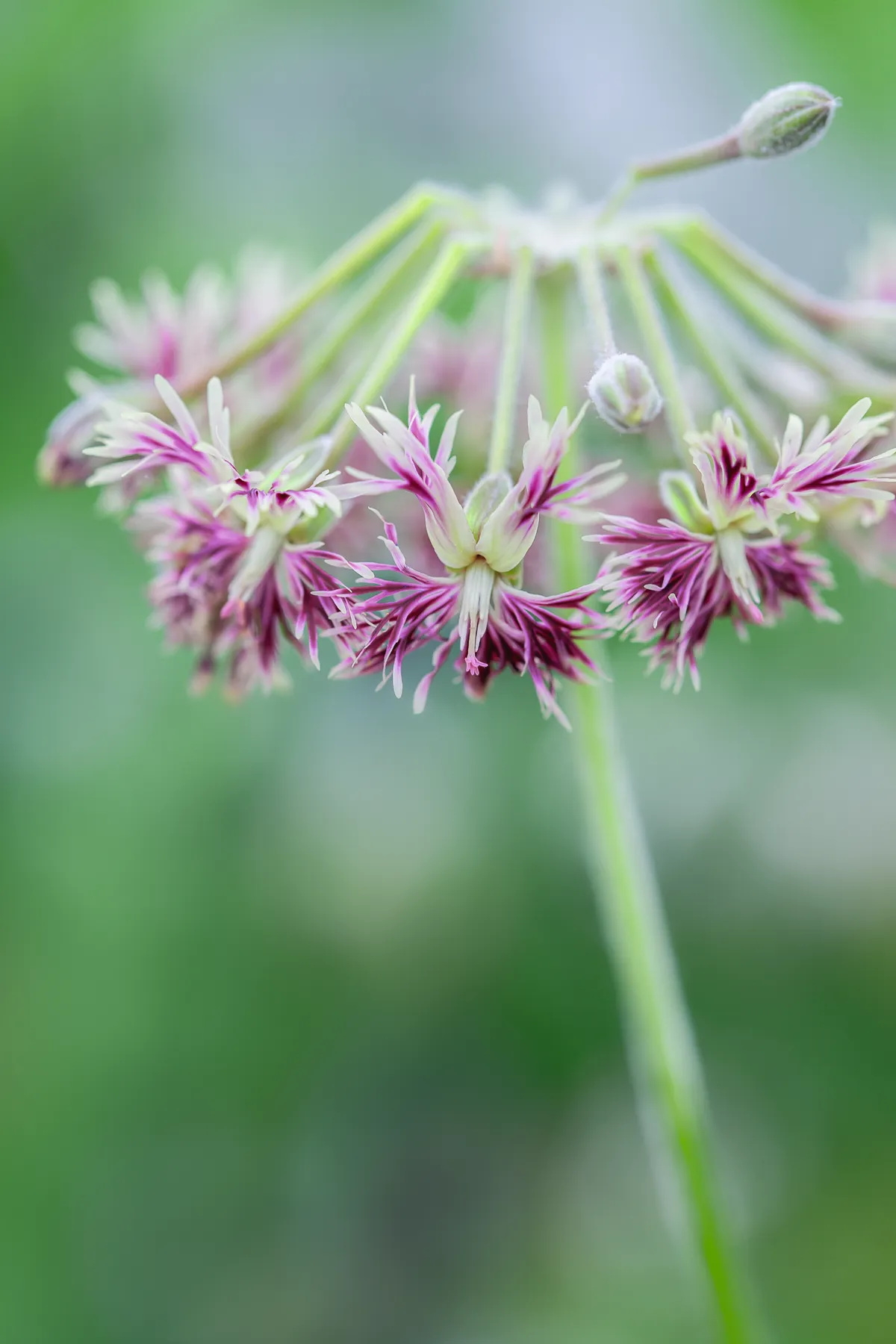
The fringed petals give the flower a slightly zany look. Leaves are so narrow that they seem skeletal. It was very popular when introduced in the 1860s but is now seldom grown.
Height 40cm. Hardiness RHS H1C, USDA 10b-11.
14
P. alpinum
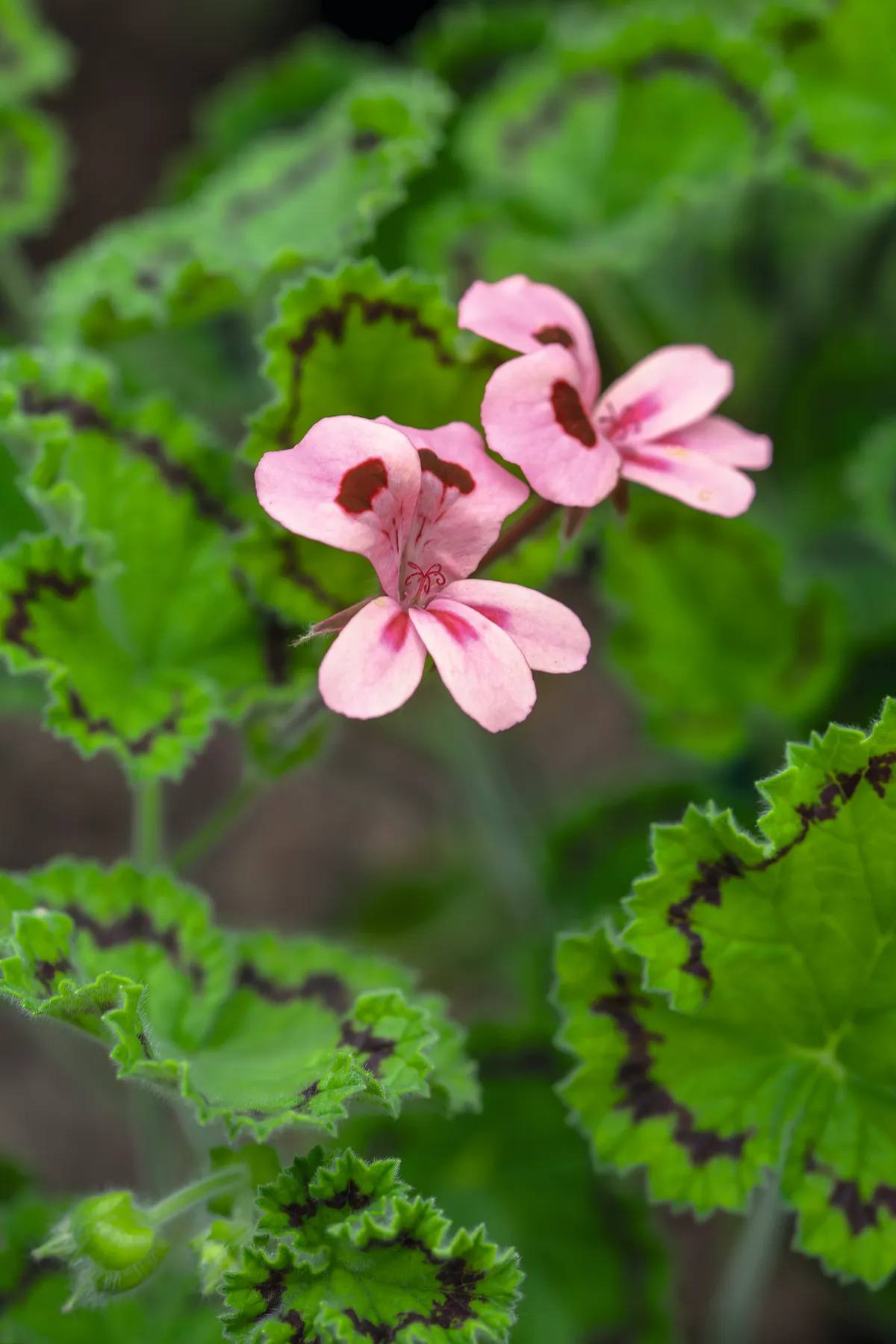
The form most commonly found in cultivation has a chocolate-coloured line that follows the shape of the leaf. It can become straggly with age so should be cut back regularly.
Height 30cm. Hardiness RHS H1C, USDA 10b-11.
15
P. gibbosum

A sprawling plant – stems up to a metre long –with unusual swellings at the leaf joints and succulent-like, blue-grey foliage. Flowers are a yellowish-green colour and strongly scented at night.
Height 50cm. Hardiness RHS H1C, USDA 10b-11.
16
P. 'Blandfordianum'
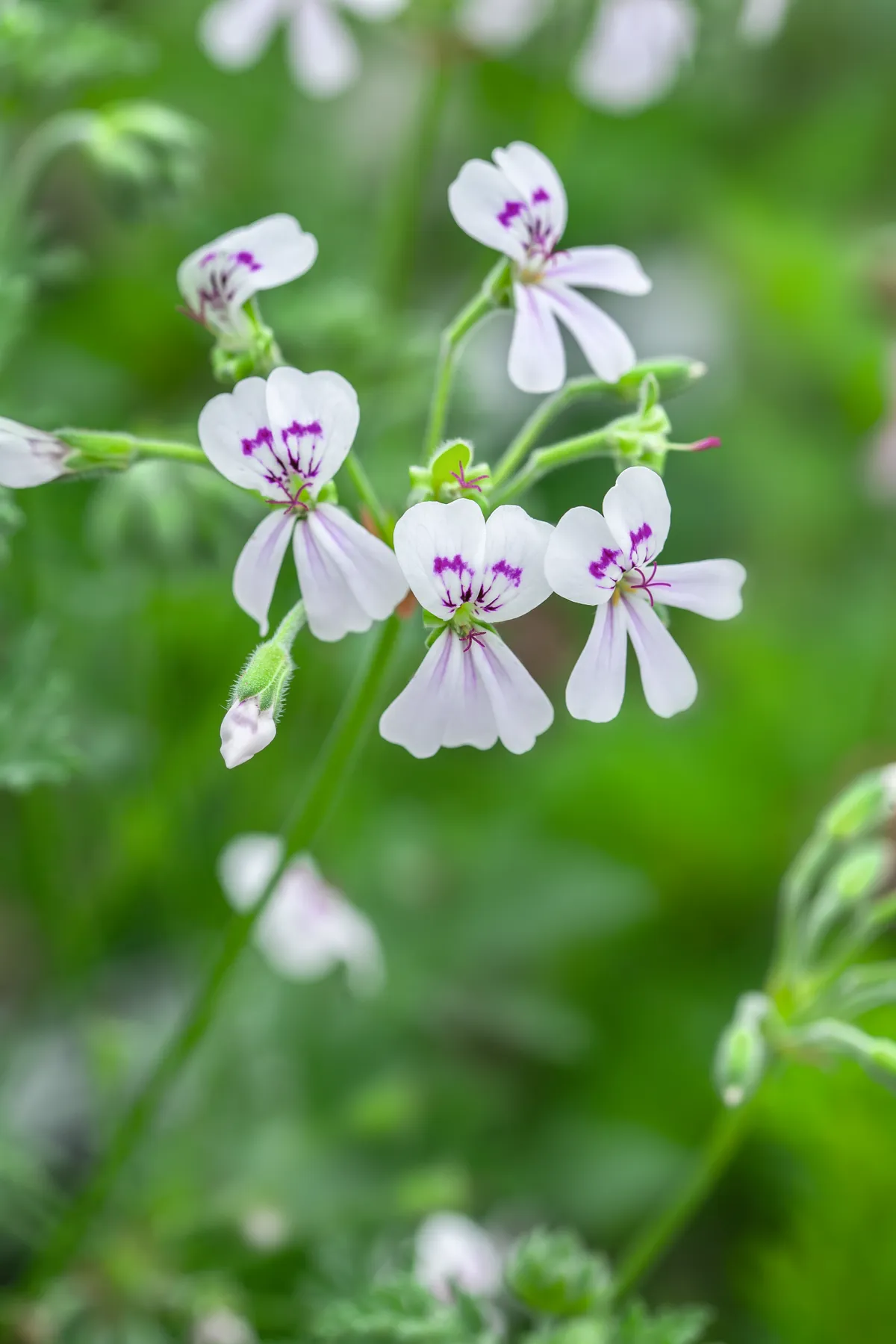
Deeply cut leaves have a pungent, wormwood scent and masses of flowers with a deep-pink smudge on the upper petals. Originally raised by the Marquis of Blandford in 1805.
Height 40cm. Hardiness RHS H1C, USDA 10b-11.
17
P. echinatum 'Album'

Known in the 19th century as the ‘sweetheart pelargonium’ for the heart-shaped, red markings on its upper petals. In the wild the species occasionally has pink or magenta flowers.
Height 40cm. Hardiness RHS H1C, USDA 10b-11.
18
P. 'Schottii'
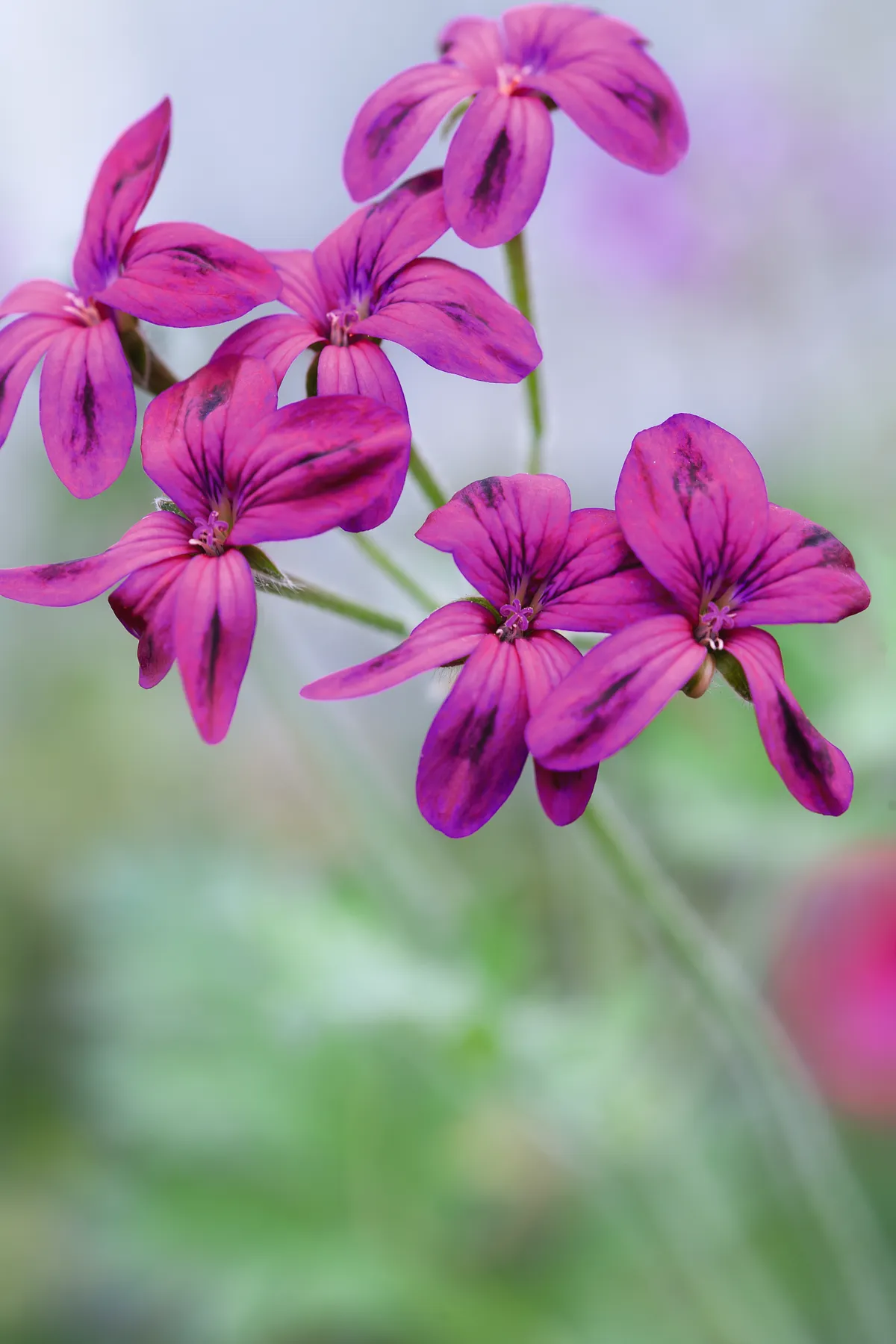
From the same parent as P. ‘Ardens’, this has feathery, silvered foliage and larger flowers. The petals are a reddish purple and marked with black lines. Easy to propagate from stem cuttings.
Height 40cm. Hardiness RHS H1C, USDA 10b-11.
19
P. schizopetalum
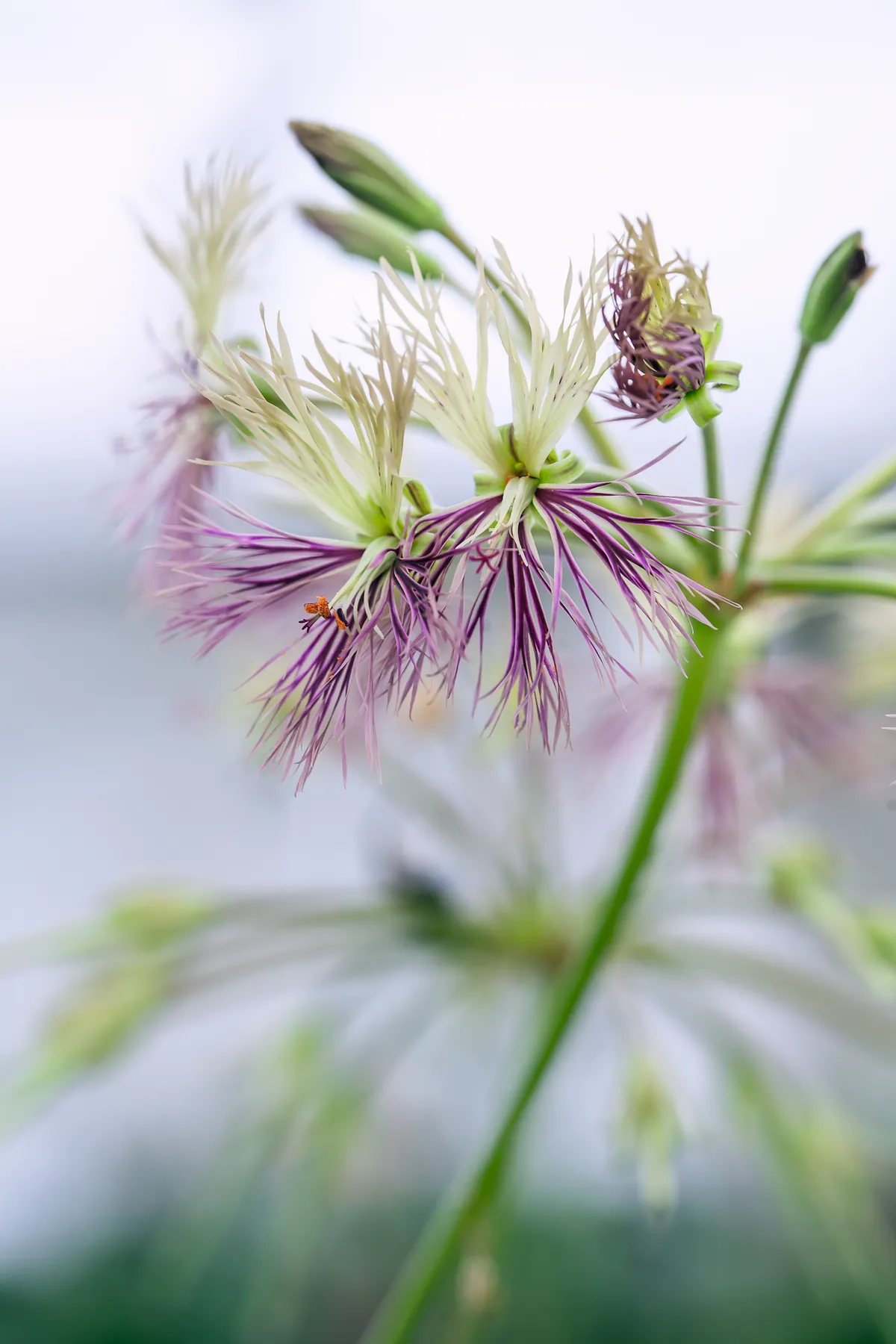
A large, gnarled tuber – more mineral than vegetable – with short stems of wispy flowers, scented at night. Lower petals are usually flushed purple and upper ones a yellowish-green.
Height 20cm. Hardiness RHS H1C, USDA 10b-11.
20
P. quinquelobatum
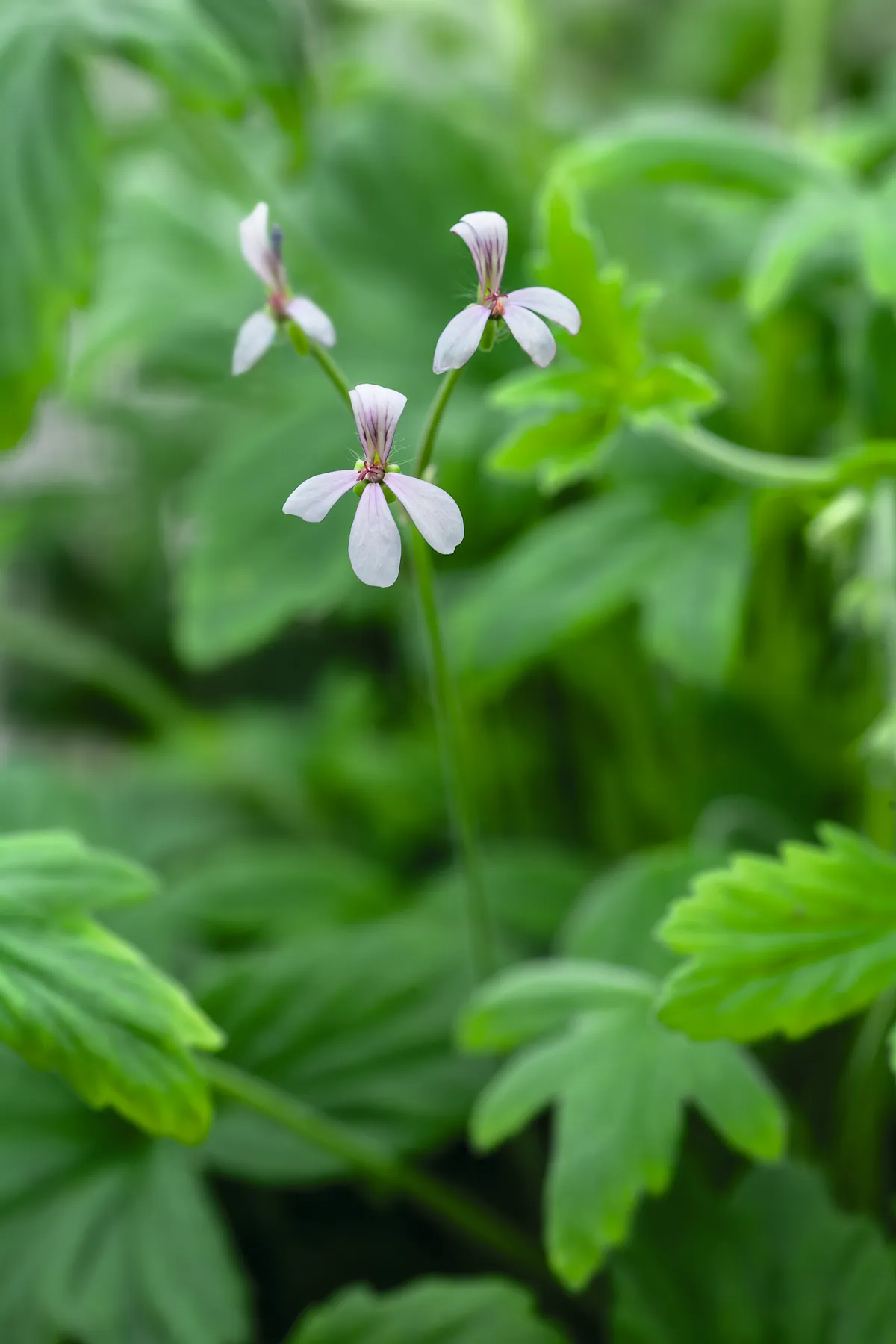
An easy-to-grow annual with apple-green foliage and biscuit-coloured flowers, which, as the temperature and light-levels change, develop an iridescent sheen on the petals.
Height 20cm. Hardiness RHS H1C, USDA 10b-11.
21
P. grandiflorum
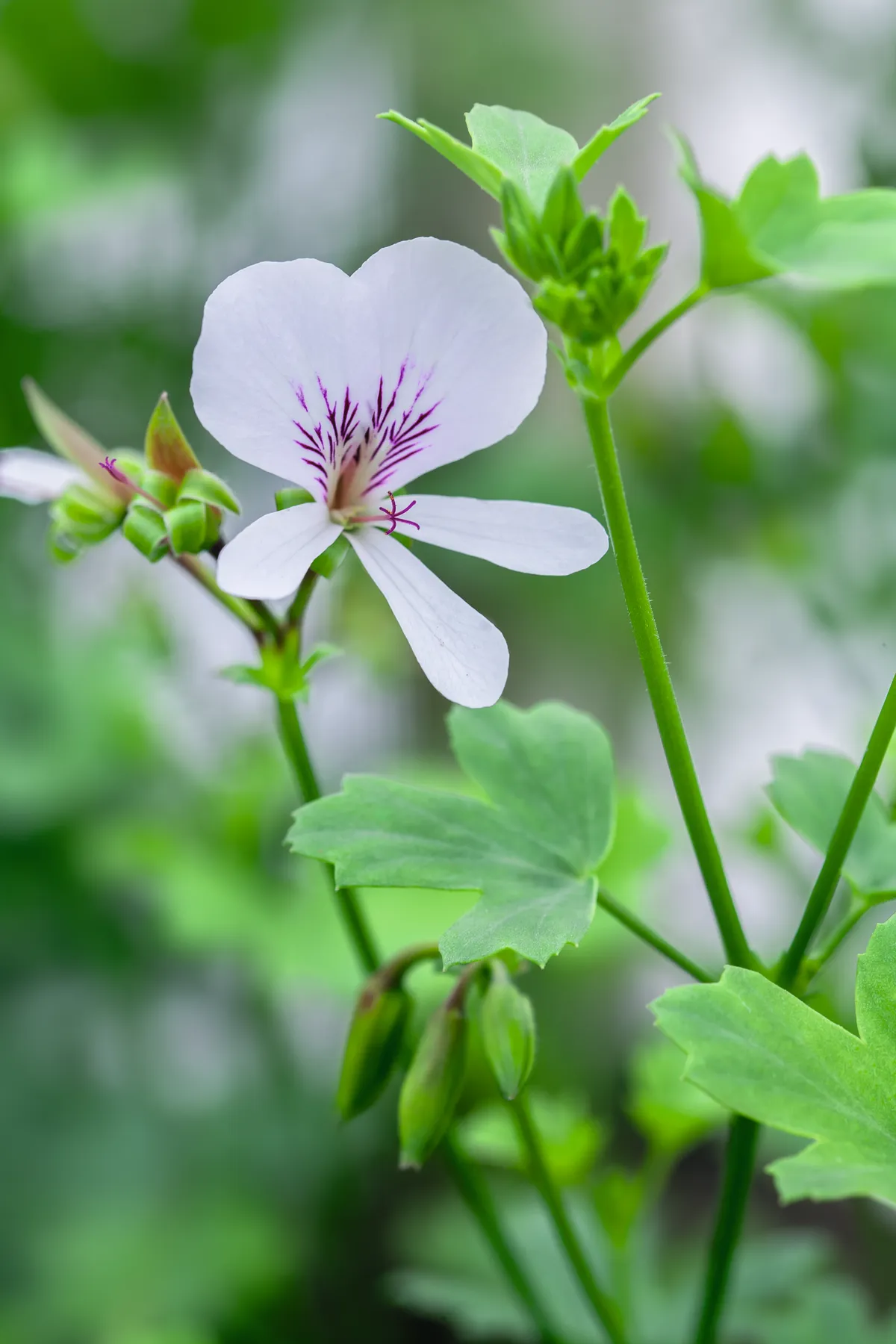
An upright plant whose stems become woody with age. Leaves are smooth and glaucous and flowers are usually pale pink with red veining on the upper set. An ancestor of the regal type.
Height 40cm. Hardiness RHS H1C, USDA 10b-11.
22
P. 'Ardens'
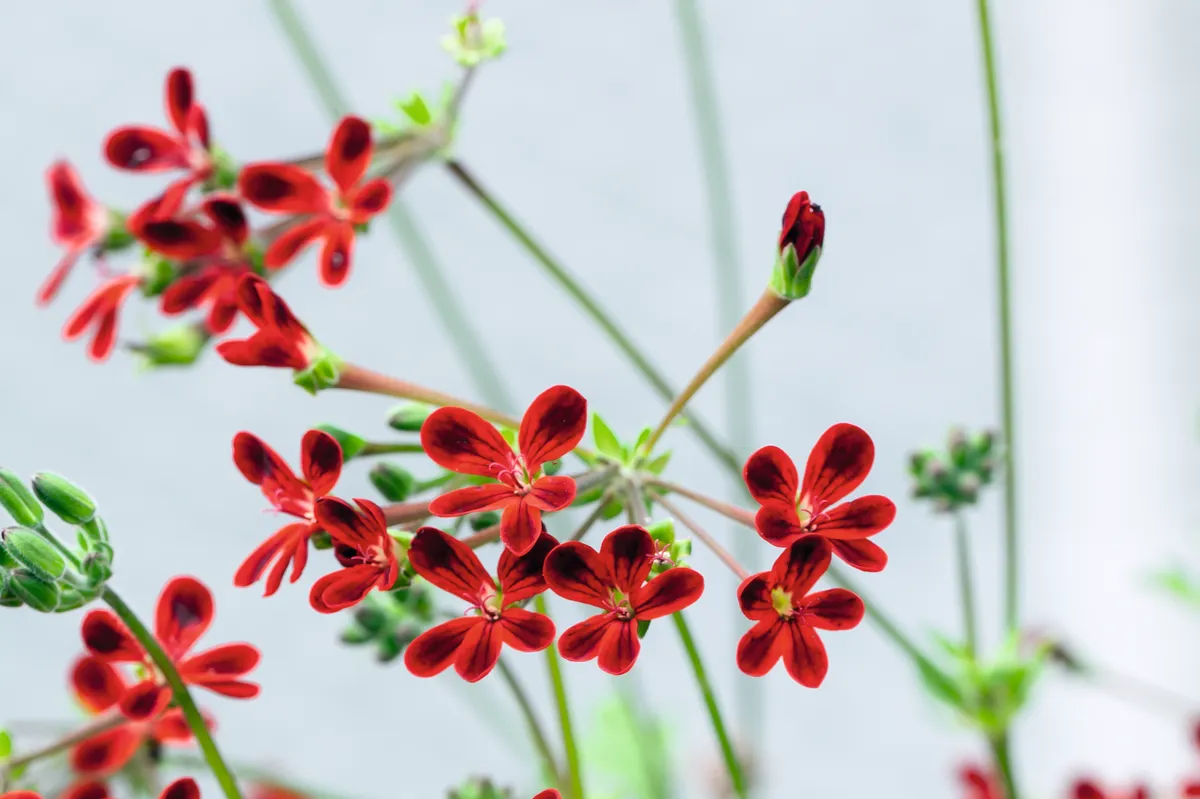
A popular primary hybrid first raised in 1810. Sprays of flowers, so intensely red they appear to glow, are produced at the end of long stems. Best in part shade.
Height 35cm. Hardiness RHS H1C, USDA 10a-11
23
P. sidoides

Sprays of dark-purple, almost black, flowers contrast with the silvery grey, heart-shaped leaves. Used in traditional medicine in South Africa and still found in some cold remedies.
Height 25cm. Hardiness RHS H1C, USDA 10b-11.
24
P. lobatum
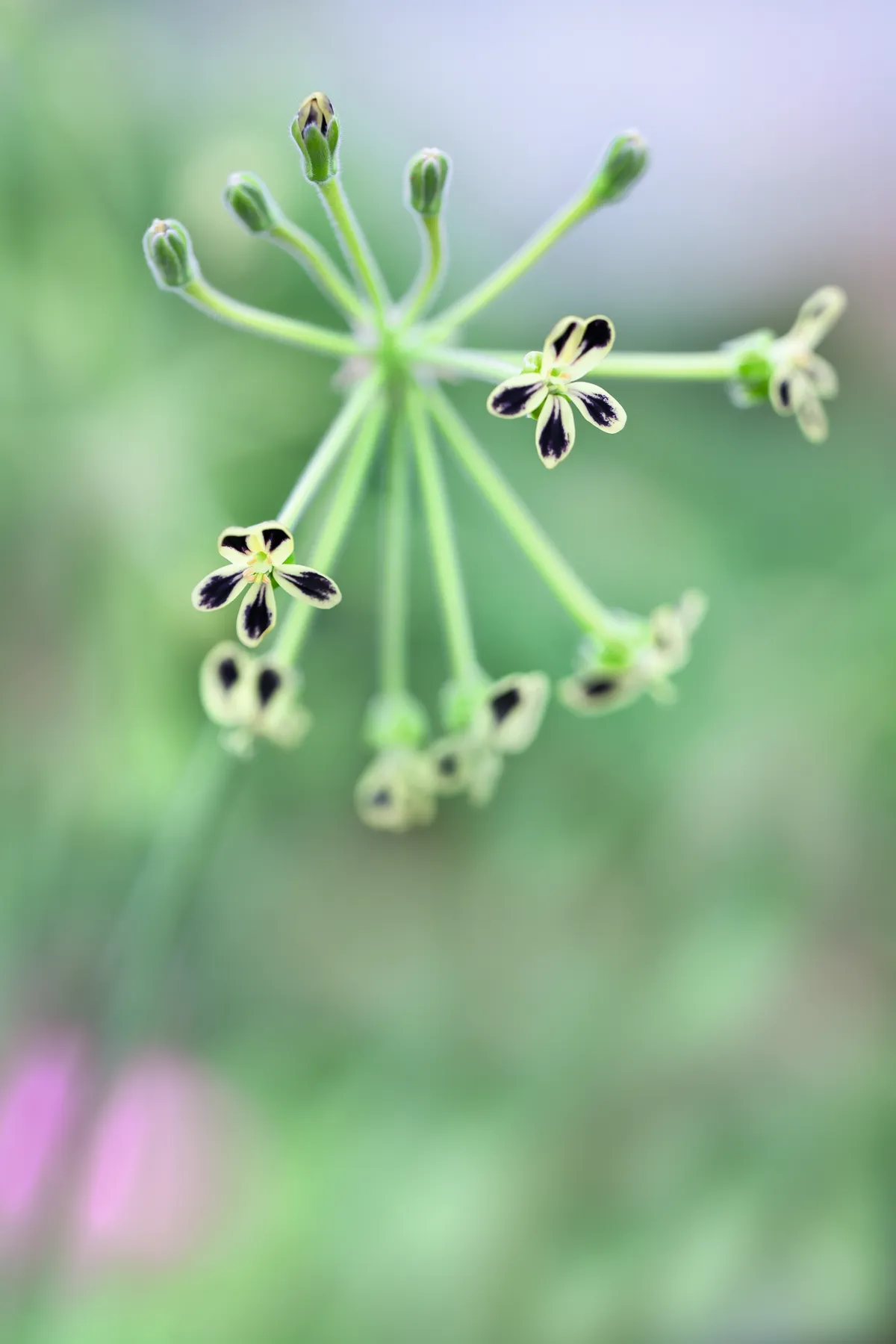
Large, velvety leaves appear from a peculiar-looking, woody tuber followed by umbels of cream-and-brown flowers that are sweetly scented at night. Parent of some attractive hybrids.
Height 20cm. Hardiness RHS H1C, USDA 10b-11.
25
P. reniforme

Kidney-shaped, greyish-green leaves with a velvety texture and flowers that are usually a startling shade of pink. The plant’s size and habit is very similar to P. sidoides.
Height 25cm. Hardiness RHS H1C, USDA 10b-11.
26
P. 'Deerwood Lavender Lass'
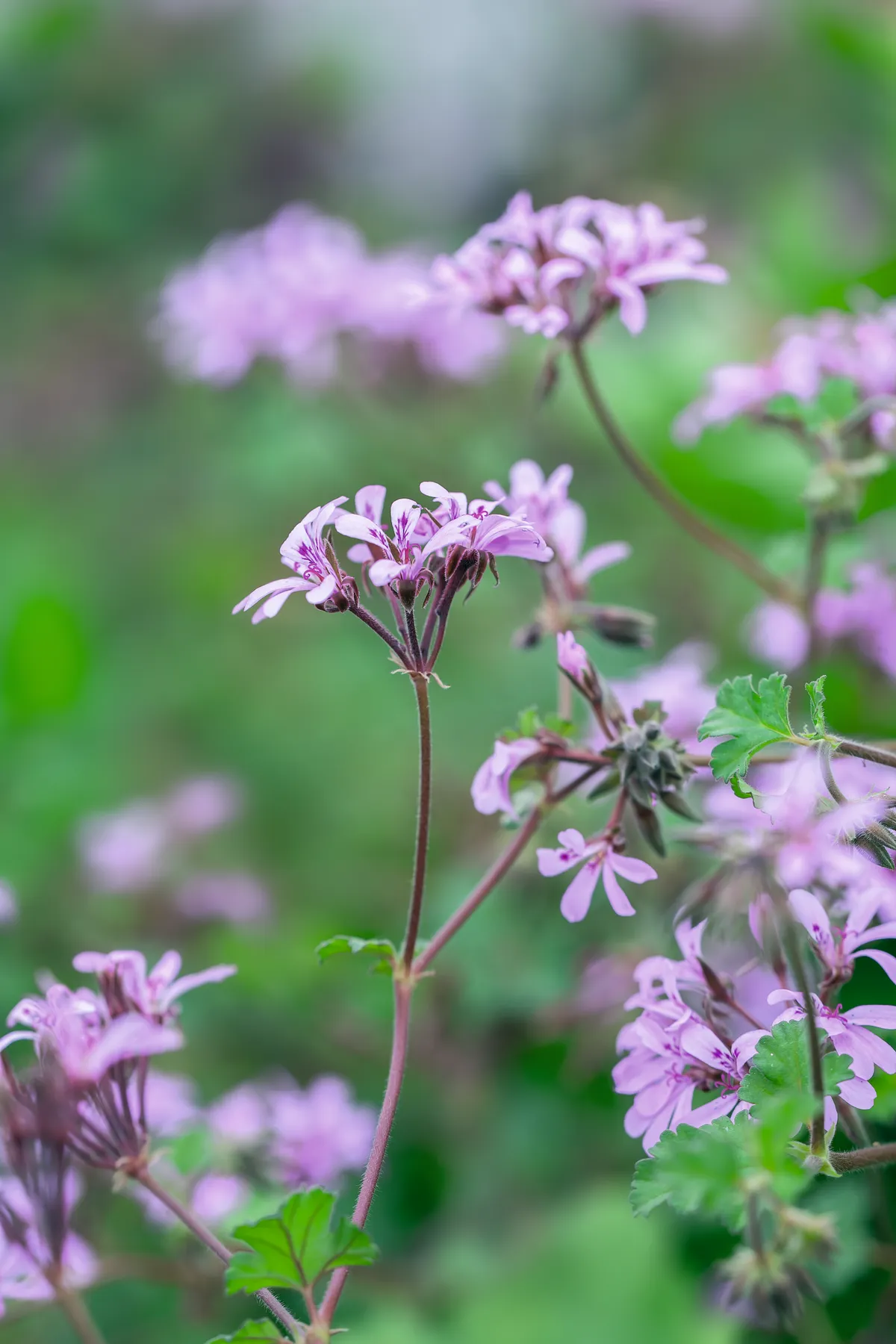
A primary hybrid raised in the USA in the 1990s, this is a sprawling plant with tight clusters of pale-pink flowers. Starts flowering in late April and is still going strong in October.
Height 60cm. Hardiness RHS H1C, USDA 10b-11.
Where to buy
Fibrex Nurseries
Honeybourne Road,
Pebworth, Stratford-upon-Avon, Warwickshire CV37 8XP.
Tel 01789 720788, fibrex.co.uk
Pelargonium Species World
Online only seed supplier. pelargoniumspeciesworld.com
Woottens of Wenhaston
The Iris Field, Hall Road,
Wenhaston, Suffolk IP19 9HF.
Tel 01502 478258,
woottensplants.com
You can find more information on hardiness ratings here.
Words John Hoyland
Photos Dianna Jazwinski